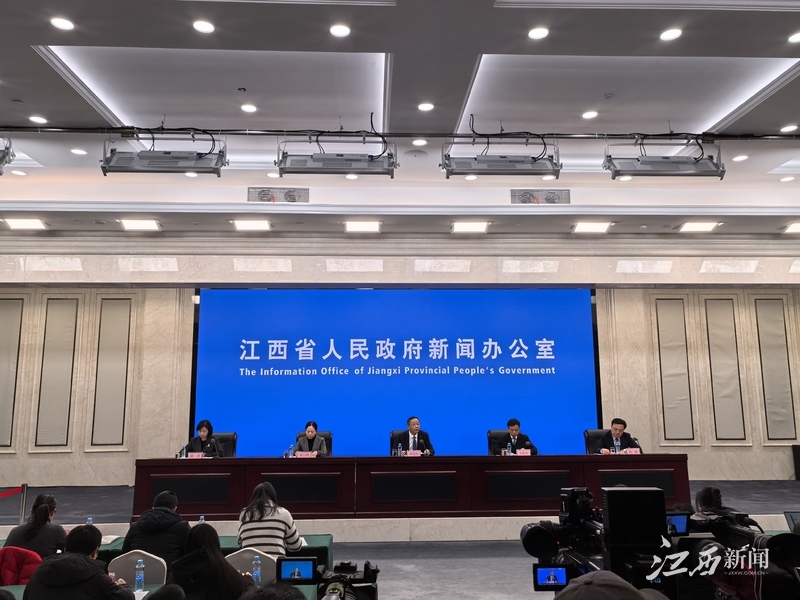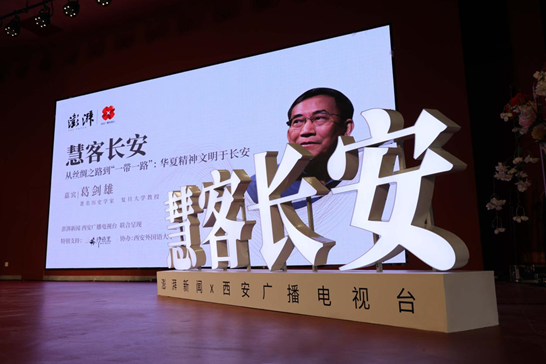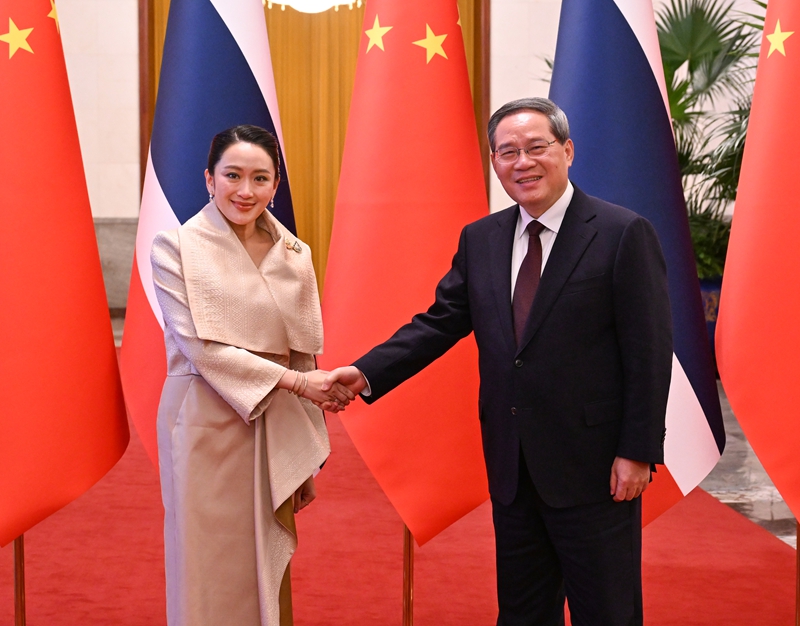Wu Xiaoqiu: There Is A "third Way" To Realize The Internationalization Of The RMB
Wu Xiaoqiu: There Is A "third Way" To Realize The Internationalization Of The RMB
Editor's note: Recently, Wu Xiaoqiu, President of the National Institute of Finance of Renmin University of China, Dean of the China Capital Market Research Institute, Director of the Chongyang Institute of Finance and First-level National Professor, delivered a keynote speech at the 2025 International Monetary Forum and emphasized
Editor's note: Recently, Wu Xiaoqiu, Dean of the National Institute of Finance of Renmin University of China, Dean of the China Capital Market Research Institute, Director of the Chongyang Institute of Finance and First-level Professor, delivered a keynote speech at the 2025 International Monetary Forum, emphasizing that the internationalization of the RMB is the core symbol of building a financial power. The improvement of the rule of law and stability of confidence are the fundamental prerequisites. The internationalization of the RMB requires breaking through the traditional path and exploring the "third path". Financial reform should focus on three aspects. The following is the minutes of the speech: (The full text is about 4,800 words, and the estimated reading time is 13 minutes)

01 The internationalization of the RMB is necessary
Rely on the rule of law and market-oriented drive
The internationalization of the RMB is an irreversible historical task and is closely related to the improvement of the rule of law, the stability of the system, and the continuity of policies. Only in this way can public expectations and market confidence be stabilized and the smooth progress of the internationalization of the RMB can be promoted. A modern country must be a country ruled by law. The importance of the rule of law is not only reflected in the field of legal theory, but also a logical starting point for formulating various policies and promoting reforms. At the same time, the core fulcrum of economic reform is marketization, which deviates from the basic direction of the socialist market economy with Chinese characteristics.
In the process of building a financial power, the most core challenge is how to achieve internationalization of finance. In essence, finance is a platform, and China not only needs to build this platform, but also needs to build a diverse, predictable and growth-oriented RMB asset pool. This asset pool can only be provided by China itself. We must insist on opening up to the outside world and will allow foreign companies to go public in China in the future. However, in the end, more than 95% of the asset supply still needs to be provided by Chinese local companies, especially those with international competitiveness and technological innovation capabilities. At the same time, national soft power is crucial, and it is reflected in the trust of investors and the international community in China. This trust is the basis for attracting foreign capital and promoting the internationalization of the RMB. Just as parents care about their children's growth environment and investment direction, capital always flows to the safest and most promising places. Therefore, the internationalization of the RMB is the core task of a systematic reform and the most difficult "hard bone" to crack.
The internationalization of the RMB is a key sign for China's financial opening up to the outside world and the realization of a financial power. If a country's legal currency lacks global influence, the claim of a financial power will not stand. For this reason, the internationalization of the RMB should become the top priority of financial reforms in the future for a long time, and we must closely focus on this goal. President Dai mentioned that the target of international investors in the Chinese market in the next ten years should increase from the current 4.5% to 10%. It seems to have increased slightly year by year, but it is actually extremely challenging. The prerequisite for achieving this goal is to steadily advance the internationalization of the RMB, otherwise there is no way to talk about it. The internationalization of the RMB is one of the core symbols of China's financial opening and modernization. If a country has limited global influence, it is difficult to call it a true financial power.
The internationalization of the RMB not only involves the investment market, but also includes multiple dimensions such as financing, payment, clearing and reserve markets, and these areas need to be improved simultaneously. At present, the RMB has become the third largest international currency in the world. As shown in the report just now, the RMB has reached 5.68% in the comprehensive internationalization index. This progress reflects the achievements of China's reform and opening up in recent years, and also reflects the achievements of China's economic development and the improvement of the rule of law. However, for China, 5.68% is far from the ultimate goal. My goal is 20%. Perhaps 10 years later, the euro will be 20%, and the US dollar may be 40%, and the rest will be left to currencies such as the pound and the yen. If the RMB can reach 20% by 2035, that is, when we build a middle-developed country, it will be a very remarkable achievement. The historical starting point for achieving this goal must be marketization. Without market-oriented and liberalized reforms, it will be difficult to truly achieve the internationalization of the RMB.
02 The Challenges of RMB Liberalization and
Exploration of paths with Chinese characteristics
To become an international currency, the RMB must be tradable. I attach great importance to the tradability of the RMB. I have also noticed the weight of the RMB in the IMF's special draw rights (SDR), which is currently 12.28%. This is a medium-term goal that we can set, reflecting the IMF's trust in China's reform and the RMB, and also its expectation for us to continue to promote financial reform and accelerate RMB liberalization. Of course, how to take this path still requires in-depth thinking, and the traditional path may not be applicable to China.
China is a big country, and its institutional influence may naturally nurture a "third path", which is different from both the traditional planning path and the complete American model. Just like the development of China's capital market, we are actually exploring a capital market model that is different from Britain, the United States and Germany. I once wrote a book "China Capital Market: The Third Model", which explores this unique development path. Therefore, whether RMB liberalization can also take a "third path" with Chinese characteristics is worthy of our serious thinking and continuous exploration.
Frankly speaking, we are indeed facing great challenges in strengthening public confidence and policy determination. If it is promoted completely in accordance with the traditional path of opening up capital projects, it may have a serious impact on my country's foreign exchange reserves and national security, and this path is not feasible. There are already some practical problems, such as the transfer of assets of many high-net-worth individuals out of the country through various means, which shows that the public still has concerns about asset security and institutional confidence. This further highlights the importance of rule of law construction. To promote the liberalization of the RMB, we must first make 1.4 billion Chinese people full of confidence in the future of the country. This is the most fundamental support force.
The liberalization of the RMB must be a gradual process. In terms of exploration paths, market-oriented reform is the direction that must be promoted. We can see that the central bank is currently promoting the reform of the RMB cross-border payment system in Hong Kong, and I think this is a path worth trying. By establishing an efficient cross-border payment network and combining the optimization of foreign trade structure, it will help promote the use of the RMB globally. For example, most countries along the "Belt and Road" are resource-based countries, and appropriate trade deficits will help the RMB "go global" and increase its proportion in the fields of trade settlement and payment.
At present, the RMB still lacks market-based tradingability in the global financial market, and there are still major obstacles to truly purchasing RMB assets worldwide. We have a trade surplus of US$360 billion with the United States. This pattern certainly supports foreign exchange reserves, but it also restricts the "external circulation" of the RMB. Therefore, it is necessary to find a breakthrough to let the RMB go out. Adjustment of trade structure is a possible path. If the trade deficit with the United States can be narrowed, it will help promote the internationalization of the RMB, but this is subject to US policy restrictions, especially export controls in the field of high-tech. Some of the US's practices are contradictory. For example, after seeing that China's chip manufacturing capabilities have significantly improved, it suddenly relaxed sales restrictions on certain products. This repetition actually affects the normalization of Sino-US economic and trade relations, and also affects the structural basis on which the internationalization of the RMB depends.
The internationalization of the RMB must be based on the country's economic growth model and trade structure, and systematic thinking and strategic arrangements are made. At the same time, it is necessary to build a stable and predictable asset pool. The current offshore market size is about 3 trillion yuan, which is far from meeting the needs of RMB internationalization. Once the RMB is offshore, it is impossible for it to be free from overseas for a long time without a stable trading mechanism and asset support. Some people propose to issue stablecoins as fiat currency, but the biggest problem is that the pricing mechanism has not yet been improved. If any stablecoin lacks a clear pricing system and a stable underlying asset structure, it will be difficult to truly play its monetary function. The RMB still has basic institutional shortcomings in this regard. Therefore, we must seriously think about how to build a complete product system and asset market around the offshore RMB. This not only concerns the promotion of RMB internationalization, but also means a systematic reconstruction of China's overall asset structure.
In the past, our country was in an era of shortage economics for a long time, and our policy focus was on supply-side reform and production capacity expansion. Today, Chinese manufacturing accounts for more than 30% of the global share, while consumption accounts for only 18% of the global market, showing a typical supply and demand imbalance and structural overreach. Faced with the new situation, China must shift from the traditional "supply-driven" to a development model oriented towards "demand expansion". This requires us to reshape the national income distribution mechanism in macro policies, stimulate the potential of domestic demand, and coordinate the economic structure with the development goals of the financial market. Just like in the past, we focused on commodity trade, our understanding of finance was mostly limited to the role of "financing tools", and this understanding is far from meeting the requirements of the new stage. The core function of modern finance should be to provide an efficient asset allocation mechanism for the entire society. Especially in the context of promoting the internationalization of the RMB, China's financial system must not only serve the real economy, but also become an important platform for domestic and foreign investors to allocate assets.
03 Build the internationalization of RMB
Strategic support and return mechanism
In addition to "going out", the RMB must also be able to "get back". Today, overseas investors' investment in the capital market through QFII, RQFII and Shenzhen-Shanghai-Hong Kong Stock Connect is only 4.5%, far lower than the level required to support the internationalization of the RMB. To truly internationalize the RMB, an effective reflow mechanism must be established, and the core of this mechanism is the capital market. Therefore, the internationalization of the RMB is closely related to the great development and opening up of the capital market. The two must be promoted simultaneously. The capital market is not only the logistics support for the RMB to "go global", but also an international financial center for RMB-denominated assets transactions. This cycle mechanism must be formed, otherwise the path to internationalization of the RMB will be hindered. From the perspective of national strategic perspective, the development of the capital market is no longer a demand for finance itself, but also a strategic support and a necessary condition for the internationalization of the RMB. Against this background, the China Capital Market Society was officially established in Shanghai yesterday. Wu Qing was approved by the Party Central Committee to serve as president and nine vice presidents were appointed, indicating that the central government attaches great importance to the development of the capital market and also indicating that the pace of promoting China's capital market reform and opening up is accelerating. This is not only a deepening reform of the financial system, but also a key layout at the national strategic level of China.
There are three main tasks for reforming the capital market:
First, the asset supply reform. At present, the asset structure and quality of China's capital market have improved, but it is not enough to support the realization of the goal of internationalizing the RMB and building an international financial center. To change this situation, it is necessary to adjust the structure of listed companies, improve their quality and competitiveness, and especially strengthen the internal connection with scientific and technological innovation, promote more high-tech enterprises to enter the capital market, thereby forming a diversified, transparent, flexible and predictable asset pool. In the next ten years, the company structure of China's top ten market capitalization should change, and technology-based companies should become an important force in the capital market. In addition, in addition to expanding the equity market, the development of the bond market is also extremely critical. After the RMB "going out", the return mechanism cannot rely mainly on the stock market. Global central banks, sovereign funds, etc. prefer to allocate treasury bonds. Therefore, the treasury bond market must become bigger and stronger. Currently, China's treasury bond balance is less than 37 trillion yuan, and it is mainly used as a position adjustment in the interbank market, and there is insufficient liquidity. Considering the huge scale of hidden debts in local governments, local debts should be replaced through government bonds to solve debt pressure with lower costs and higher credit, optimize asset structure, and enhance the stability and credit basis of the financial system.
At present, my country's treasury bonds are still positioned as financing tools to make up for the fiscal deficit, and the financial department often does not support its development as an independent financial product. But for a big country with high credit like China, developing the treasury bond market is crucial to improving financial infrastructure and enhancing liquidity in the financial system. Treasury bonds are highly liquid and highly credit-based, and are one of the safest asset classes in the capital market. Although yields are down, they are still attractive. Therefore, it should be promoted to replace local government high-cost debts by issuing government bonds and reduce overall financing costs. The interest rates of local bonds have been as high as 4%-10%. Hedging the credit risks of local bonds through central high-credit treasury bonds and carrying out ten- or twenty-year replacements can not only enhance market confidence, but also help alleviate local debt pressure and release the momentum for economic development.
The second is investment reform. If there is an asset, someone must buy it. In the past, the capital side was mainly individual investors, the participation of institutional funds was low, the market liquidity was insufficient, and the price discovery mechanism was also suppressed. Large funds such as insurance funds, pensions, and social security funds are often restricted by regulatory indicators such as assessment mechanisms and solvency, and it is difficult to effectively participate in the capital market. The regulatory orientation of this risk "demonization" should be adjusted. In fact, the capital market is a risk market, but it is also a risk-return market. Now the State Administration for Financial Regulation has begun to relax restrictions, such as allowing insurance funds to allocate equity assets by 20% of the new funds, which is a positive signal. At the same time, pensions and social security funds should further become the "ballast stone" of the investment market and establish a demonstration role of rational investment and long-term investment. A good market not only requires high asset quality, but also requires sufficient liquidity and basic confidence. Therefore, a "bottom-line fund" mechanism should also be established, such as stability funds, qualitative funds, etc., and liquidity support should be provided by the central bank or sovereign funds if necessary. The central bank launched structural monetary policy tools on September 24, 2024, to form a direct linkage with the capital market, which is a major progress in the institutional stability of the RMB asset market. With the scale of China's capital market reaching 250 trillion yuan, of which equity is about 100 trillion yuan and bonds is 150 trillion yuan, its stability is directly related to the security of the national financial system.
The third is institutional reform. It is not enough to rely solely on the adjustments on the asset side and the capital side. If the institutional platform is unfair, opaque, and even has problems such as fraudulent listing, no matter how good the assets are, they will be difficult to win market trust. Therefore, institutional reform must start from the legal system. From the Criminal Law to the Company Law and the Securities Law, it is necessary to form a "symmetry of profit and responsibility" crackdown mechanism for illegal and irregular behaviors, and is no longer an understatement of punishment such as "three years of sentence to three years of delay". Fraudulent listing and false disclosure must be investigated to the end, so that they can "lose everything and sit in prison" and form a real deterrent. In addition, the issuance system, transaction system, mergers and acquisitions, restructuring, delisting mechanism, etc. also require systematic reforms. The focus of supervision should shift from administrative control to market-oriented and legal supervision, especially strengthening supervision of transparency. The core logic of reform is to rebuild market rules and trust system, so that China's capital market can become a market that global investors are willing to come, stay and invest. This is the institutional basis for truly realizing the goal of internationalizing the RMB and building a financial power.

Panoramic view of the 2025 International Currency Forum venue





